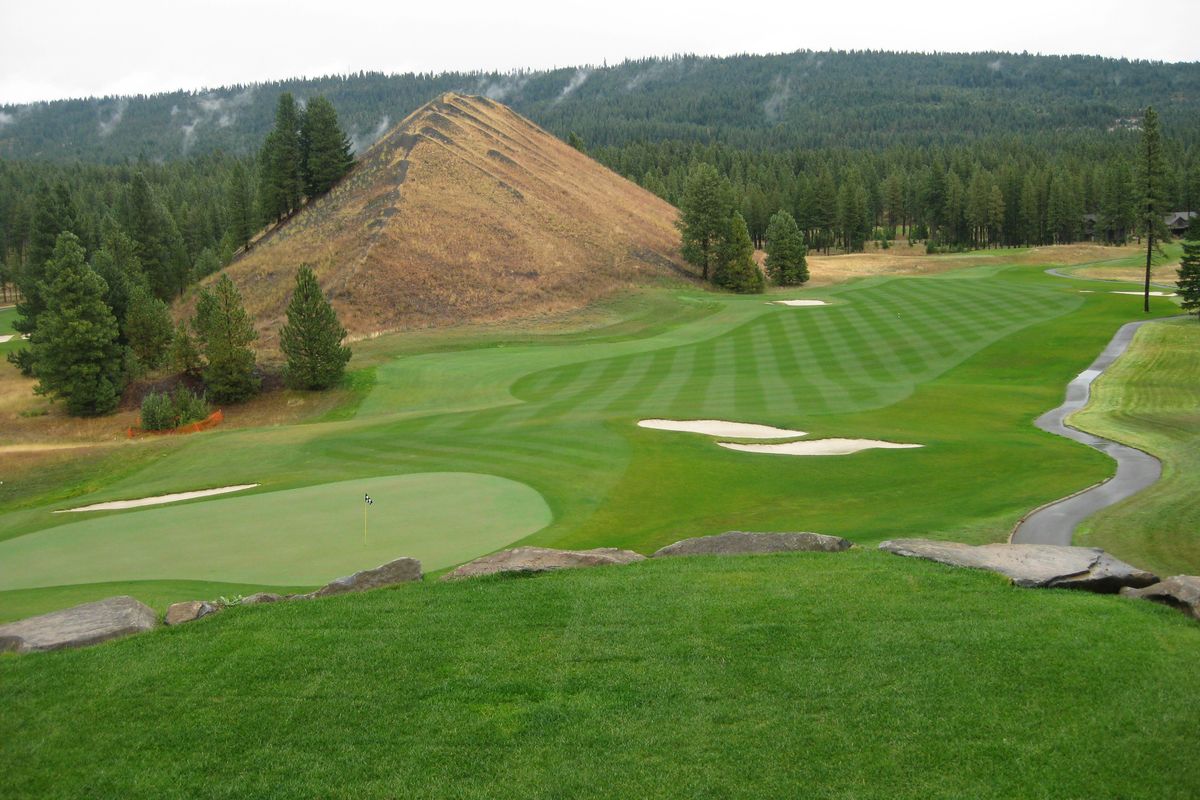‘Simple’ ride ropes you in

Rope Rider is billed as being slightly easier than Prospector. That’s probably true on a calm day, but it didn’t seem that way when the wind picked up midway through the front nine.
Still, Rope Rider simply has an enjoyable feel to it. It’s a tad more open than Prospector and the contours of the greens and bunkers aren’t quite as severe.
While Prospector’s signature No. 10 has a stunning elevation drop of 125 feet, one of Rope Rider’s attractions is a 120-foot hill of coal tailings stationed right of the ninth fairway that is visible from numerous holes. The course is built on the site of the historic Roslyn Mines’ No. 9 and No. 10. Rope Rider is named in honor of miners who balanced themselves on the roped coal cars used to maneuver inside the steep mine shafts.
“It’s built on the same terrain (as Prospector), but the design features are a lot more simple, for lack of a better word,” director of golf Brady Hatfield said. “The rationale behind that is Jacobsen and Hardy designed it to be family friendly. There aren’t as many big numbers, not as many forced carries and not as much mounding.”
The course reinforces its family-friendly claim with a set of youth tees (all par 3s ranging from 85 to 152 yards). It also features three- and six-hole loops that end near the clubhouse, popular for families with younger children.
We selected the blue tees at 6,743 yards, but it was just our luck that six of the last nine tee boxes were set on the “Jake” tees (named for Jacobsen), adding a couple hundred yards of length. The back nine was a serious challenge when the breeze escalated into a one- to two-club wind and my driver took the afternoon off.
From 12 on we dealt with par 3s of 200 and 186 yards, par 4s dead into the wind at 462, 431 and 430, and a 550-yard par 5. The 12th through 14th, all into the teeth of the wind, was the toughest stretch we encountered at either course.
The par-3 12th was 200 yards with a bunker on each side of a green shaped like a one-lane driveway. The 13th measured 460 yards. A solid drive is a must to take advantage of a downhill approach shot. Our foursome failed to hit solid drives and paid for it on our scorecards. No. 14 was 431 yards and well-bunkered in the landing zone and near the green.
The back side concludes with the 550-yard 17th, a quality par 5, and the 430-yard 18th. A headwind added difficulty to a drive requiring a 235-yard carry over water to find an ideal spot in the fairway.
“No. 18 is a great finishing hole,” Hatfield said. “I really like that tee shot, it’s more demanding than it looks. And 17 is a good par 5. It usually plays into the wind.”
The front nine begins gently with a 504-yard par 5 from an elevated tee box and a 133-yard par 3. The third hole is reachable at 314 yards if one sidesteps fairway and green-side bunkers.
No. 7 was a tough par 4, spanning 444 yards with a slight dogleg right. The fairway was expansive but sand traps bordered the right side and trouble awaited drives wide left. It took us a while to notice. We had to let a buck in velvet play through. He meandered by the elevated tee boxes and cut across the right edge of the fairway into the trees. Deer tracks were noticeable in several sand traps at Rope Rider.
Suncadia has a small number of year-round residents. Most of the spacious houses on Prospector and Rope Rider serve as second homes. The majority of the clientele is from the Seattle area but the resort draws visitors from throughout the state and the Pacific Northwest.
“Last year was the first year we attended the Spokane golf show and we had a great turnout,” Hatfield said. “There’s a lot of traffic going back and forth, a lot of folks heading from Seattle to Spokane on golf trips that stop at our place.”